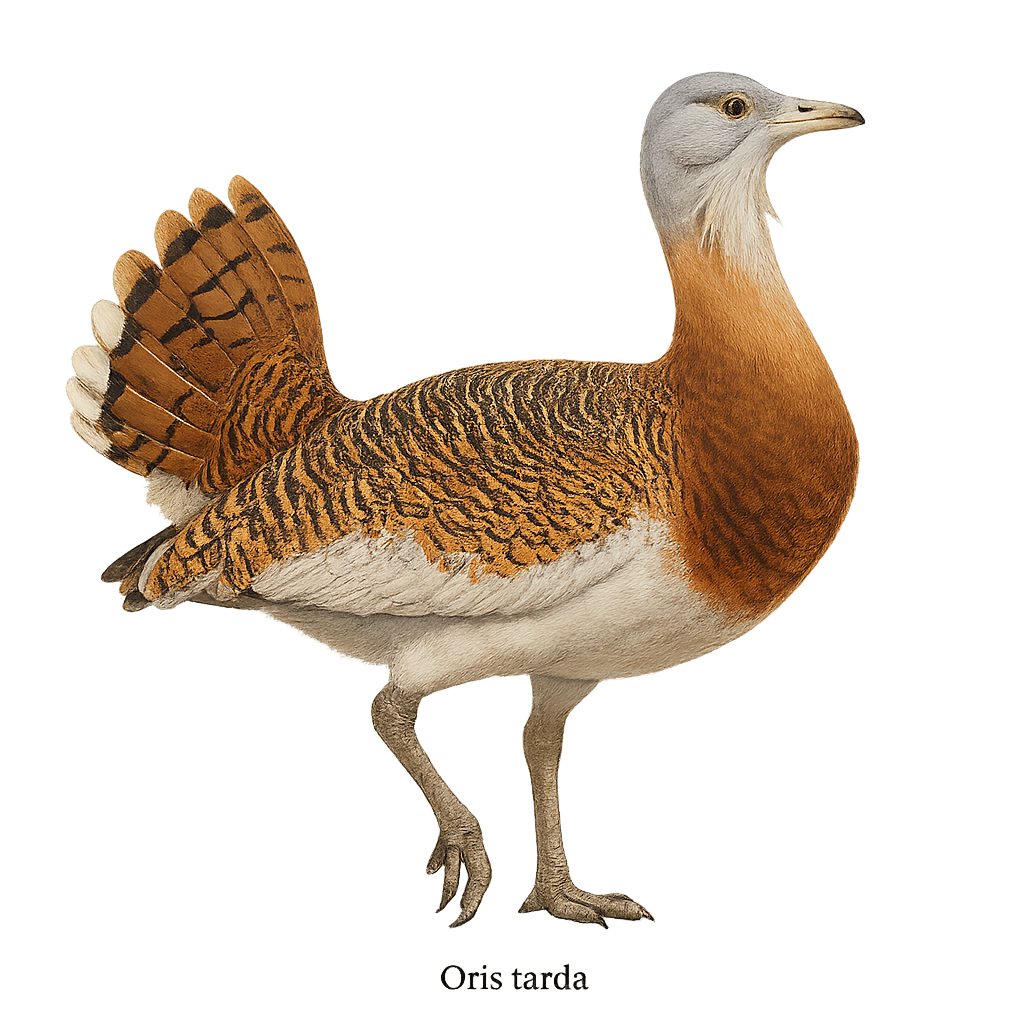Your wildlife photography guide.
Explore the great bustard in detail, study its behavior, prepare your shots.
Where to observe and photograph the great bustard in the wild
Learn where and when to spot the great bustard in the wild, how to identify the species based on distinctive features, and what natural environments it inhabits. The WildlifePhotographer app offers tailored photography tips that reflect the great bustard’s behavior, helping you capture better wildlife images. Explore the full species profile for key information including description, habitat, active periods, and approach techniques.
Great Bustard
Scientific name: Otis tarda

IUCN Status: Vulnerable
Family: OTIDIDAE
Group: Birds
Sensitivity to human approach: Suspicious
Minimum approach distance: 50 m
Courtship display: March to April
Incubation: 23-28 jours
Hatchings: April to May
Habitat:
Open plains, steppes, grasslands
Activity period :
Primarily active during the day, with peak activity in the morning and late afternoon.
Identification and description:
The great bustard, Otis tarda, is one of the heaviest flying birds. It is recognizable by its brown and white plumage, with distinctive patterns on the wings. Males, larger than females, sport a white feather mustache during the breeding season. This bird prefers vast open plains and steppes, where it feeds on plants, insects, and small vertebrates. The great bustard is a symbol of bird conservation in Europe, as it is threatened by habitat loss and hunting. It is known for its spectacular courtship displays, where males puff up their feathers to impress females.
Recommended lens:
400 mm – adjust based on distance, desired framing (portrait or habitat), and approach conditions.
Photography tips:
To photograph the great bustard, it is essential to maintain a safe distance of at least 50 m to avoid disturbing it. Use a telephoto lens of 400 mm or more to capture detailed images without getting too close. The best opportunities arise early in the morning or late afternoon when the light is soft. Be patient and wait for the bird to move naturally in its habitat. A tripod can be helpful to stabilize your camera and achieve sharp shots.
The WildlifePhotographer App is coming soon!
Be the first to explore the best nature spots, track rutting seasons, log your observations, and observe more wildlife.
Already 1 432 wildlife lovers subscribed worldwide

